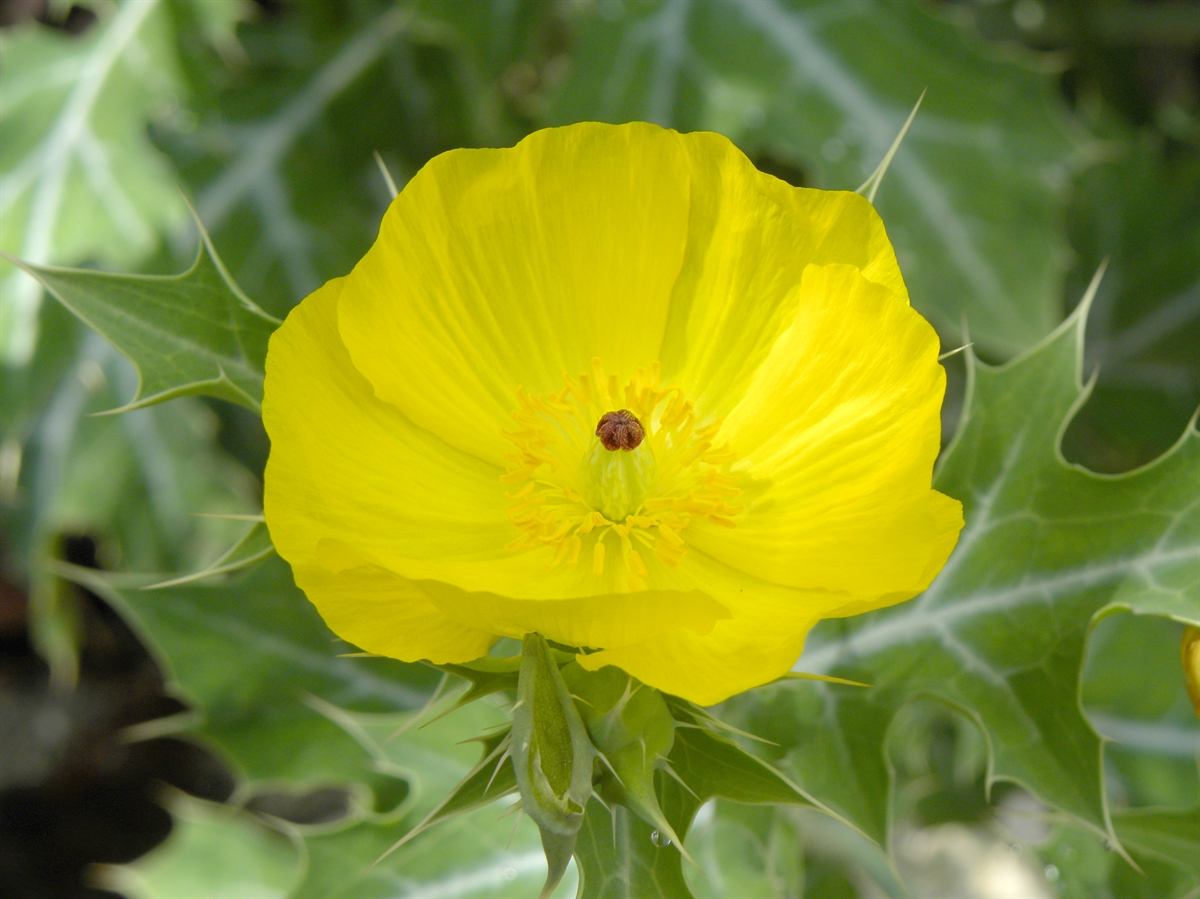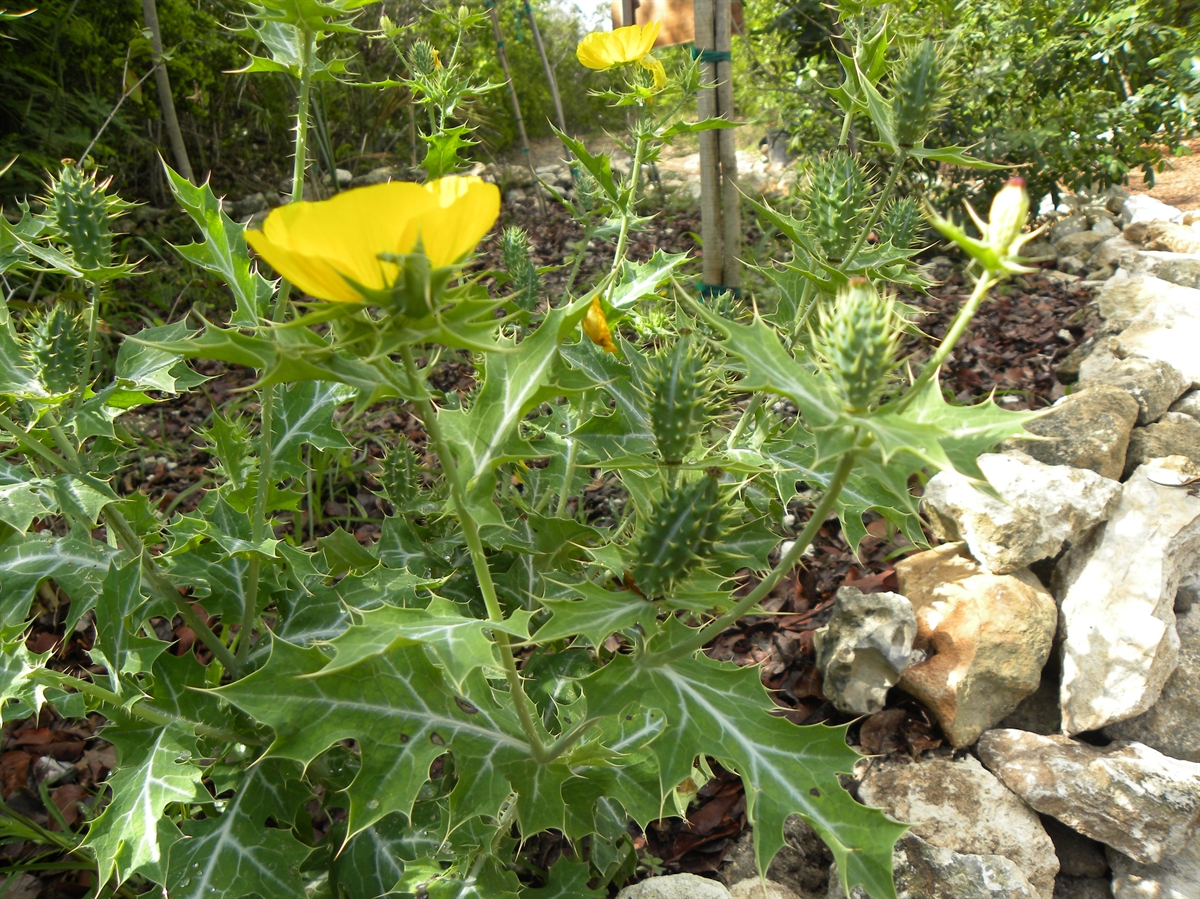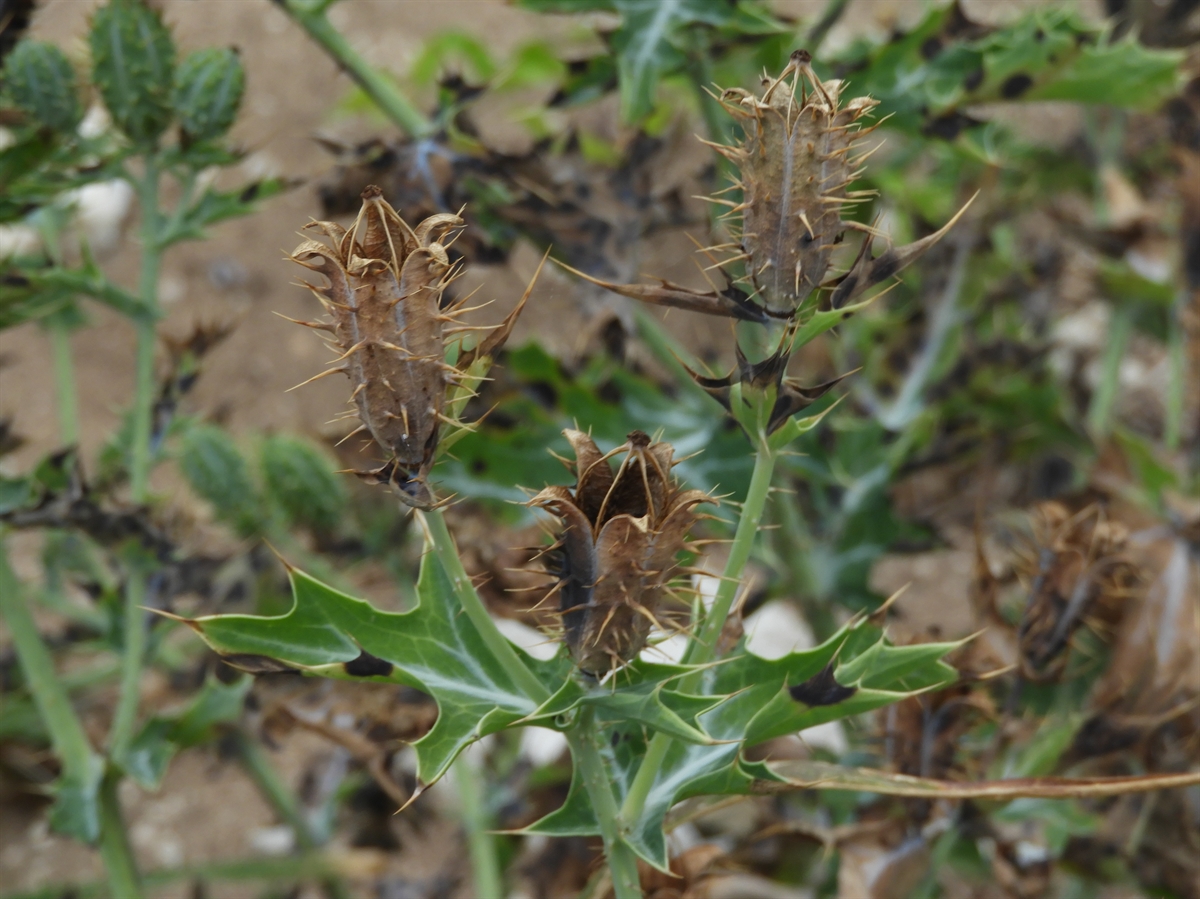Habit: Argemone mexicana grows as an herbaceous annual-biennial to less than 1 m in height. The entire plant is covered with stiff sharp prickles. The leaves are arranged alternately, are sessile on the stems, and up to 20 cm in length. The leaf is sinuate and lobed, with a spiny margin, and has whitish venation. The vegetative parts produce a yellowish sap.
The complete, perfect, actinomorphic flowers are arranged solitarily and subtended by bracts. The calyx has 3 greenish sepals each tipped with a spine. There are 6 bright yellow petals in the corolla. There are numerous stamens and a superior ovary with a single locule. The fruit is a poricidal capsule that is covered with spines.
Habitat: Argemone mexicana grows in Human Altered environments (abandoned fields, yards, and roadsides).
Distribution: Argemone mexicana occurs throughout all the island groups of the Lucayan Archipelago as well as the southern United States, the entire Caribbean region, and Central and South America. It is also known to occur in Bermuda as well as becoming naturalized as a weedy species throughout the Africa and Asia.
Medicinal/Cultural/Economic usage: Argemone mexicana has been used in the Bahamas to treat a wide variety of diseases including respiratory problems (asthma, coughing, hiccups) as well as blood related diseases (hepatitis, jaundice, and high blood pressure), ringworm, and to remove warts.
Oils can be extracted from the seeds and roots and have been used for lighting. Extracts can also be used as a pesticide.
In general extracts from Argemone mexicana are considered poisonous and care should be taken when ingesting it.



